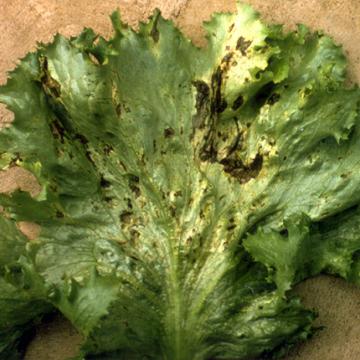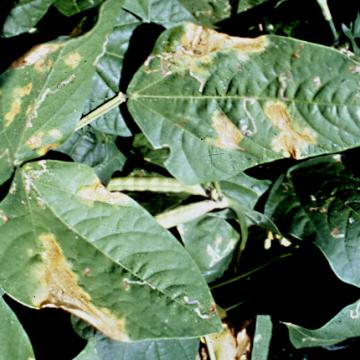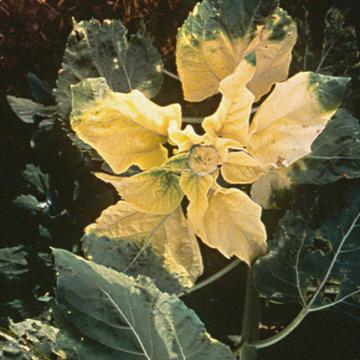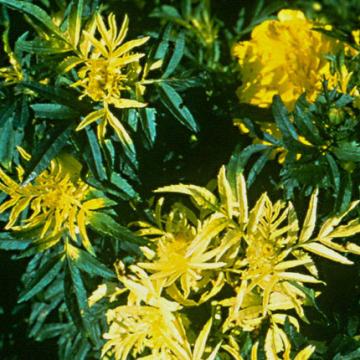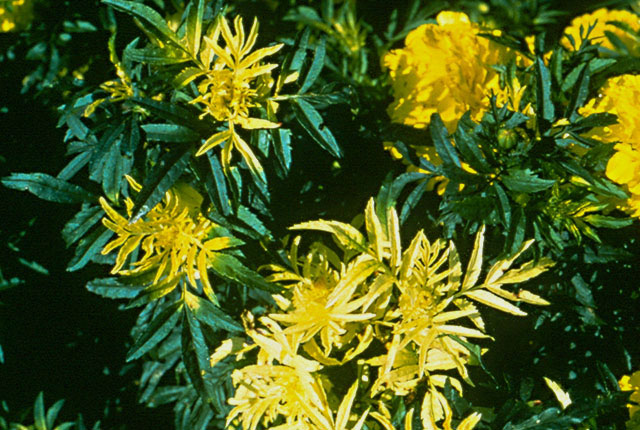DISEASE: Bacterial leaf spot (Head rot)
HOST: Lettuce
Leaf with black, greasy spots that tend to be vein delimited. Lesions begin as small, angular, water-soaked lesions that coalesce, resulting in large necrotic areas.
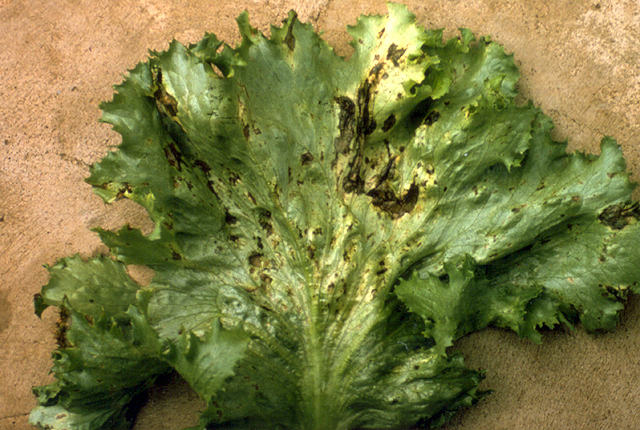
Bacterial leaf spot (Head rot) | Lettuce
DISEASE: Bacterial leaf spot (Head rot)
HOST: Lettuce (Lactuca sativa)
PATHOGEN: Xanthomonas axonopodis pv. vitians
PATHOGEN SYNONYM: Xanthomonas campestris pv. vitians
SOURCE: A. Alvarez
DISEASE: Bacterial leaf spot
HOST: Cowpea
Leaf spots vary in size from small to large and some fall out in time, leaving a shot-hole appearance.
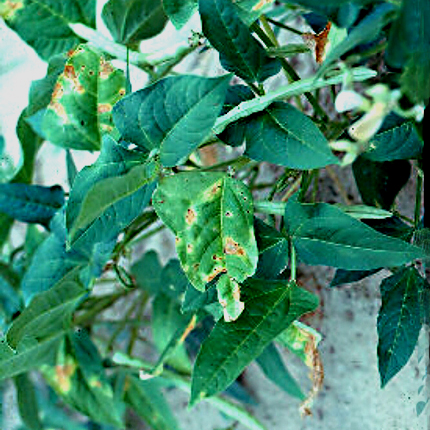
Bacterial leaf spot | Cowpea
DISEASE: Bacterial leaf spot
HOST: Cowpea (Vigna unguiculata)
PATHOGEN: Xanthomonas axonopodis pv. vignicola
PATHOGEN SYNONYM: Xanthomonas campestris pv. vignicola
SOURCE: R. Gitaitis
DISEASE: Bacterial leaf spot
HOST: Cowpea
Leaves with large, light brown necrotic areas.
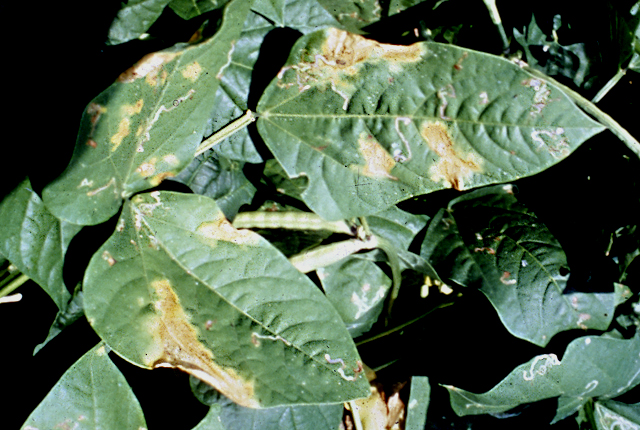
Bacterial leaf spot | Cowpea
DISEASE: Bacterial leaf spot
HOST: Cowpea (Vigna unguiculata)
PATHOGEN: Xanthomonas axonopodis pv. vignicola
PATHOGEN SYNONYM: Xanthomonas campestris pv. vignicola
SOURCE: R. Gitaitis
DISEASE: Pseudomonas leaf spot
HOST: Marigold
Marigolds with yellow apical chlorosis attributed to toxin production by the pathogen.
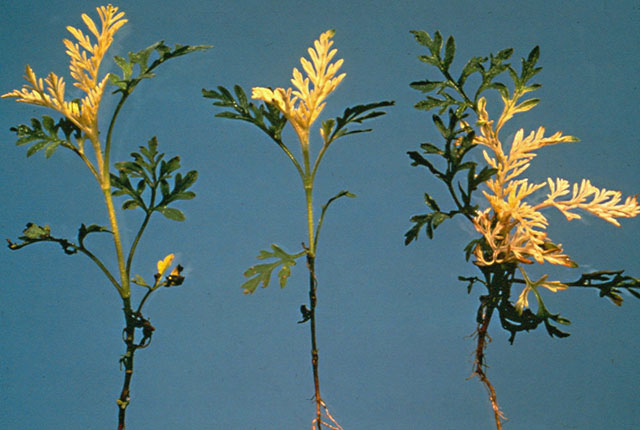
Pseudomonas leaf spot | Marigold
DISEASE: Pseudomonas leaf spot
HOST: Marigold (Tagetes erecta)
PATHOGEN: Pseudomonas syringae pv. tagetis
SOURCE: R. Durbin
DISEASE: Pseudomonas leaf spot
HOST: Marigold
Chlorotic leaves with total loss of chlorophyll. Disease is also known as toxic chlorosis.
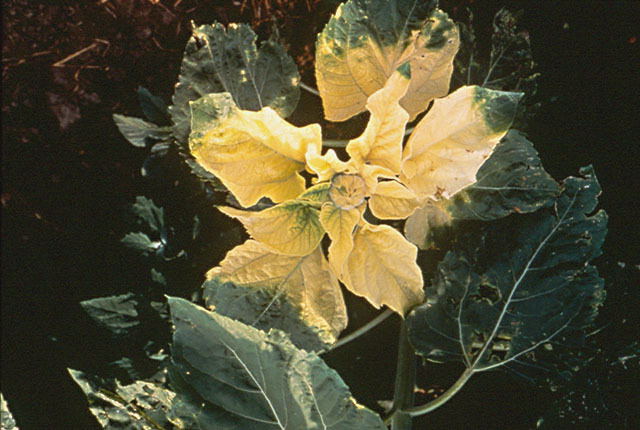
Pseudomonas leaf spot | Marigold
DISEASE: Pseudomonas leaf spot
HOST: Marigold (Tagetes erecta)
PATHOGEN: Pseudomonas syringae pv. tagetis
SOURCE: R. Durbin


